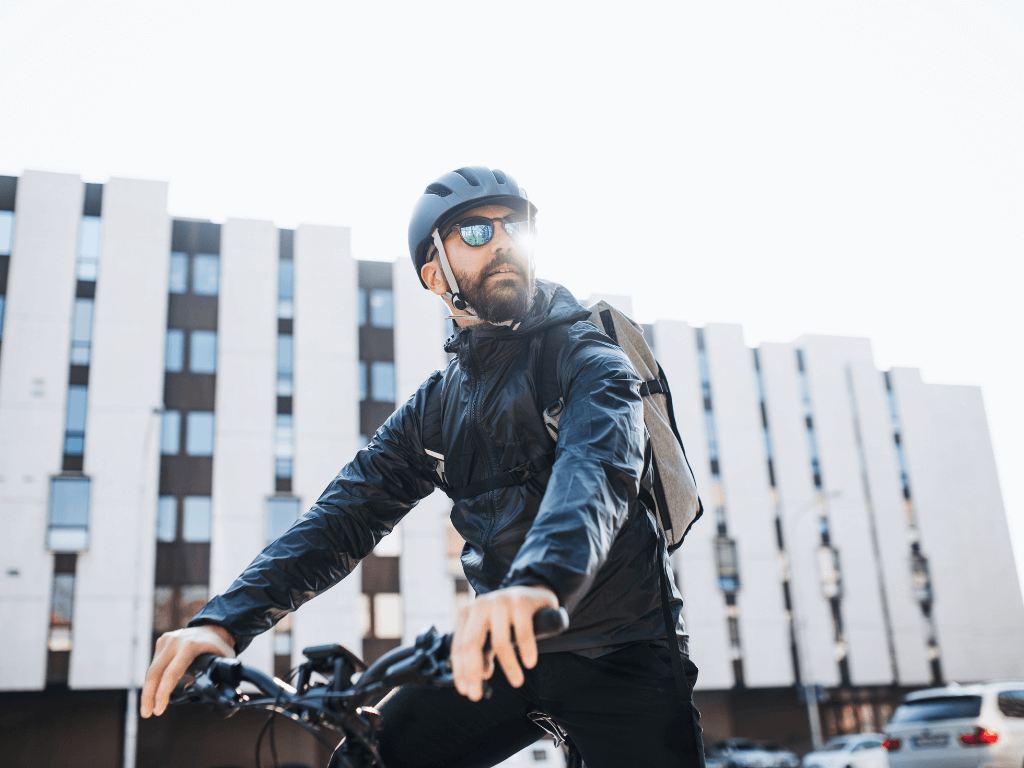7 Bicycle Safety Tips to Prevent Accidents in Baltimore

It is no secret that bicycle accidents happen all the time in Maryland. In fact, they are one of the leading causes of injury and death for children and adults in the United States. With more people than ever commuting to work by bike, it is important to take extra precautions to prevent these types of accidents from happening.
Baltimore bicycle accident lawyer John Leppler’s personal injury law firm has put together the following 7 bicycle safety tips will help keep you safe on your bike riding adventures:
Always wear a bicycle helmet
The first rule of safety when biking is to wear a bike helmet. No matter what, never go for a ride without the protection that this provides. The most important thing about wearing one? It must be securely fastened with a chin strap so it does not come off in an accident. It should also fit snugly and high on your head with no gaps in between.
This is a safety precaution that will keep you safe if something unforeseen happens. It’s the one thing you can do to prevent head injuries and death.
When riding a bicycle always ride with traffic
This is the most important thing to do. Bike riding against traffic will not only make it more difficult for cars to see you but also increase your chances of being hit from behind by a car going in reverse or turning right on red, cutting off cyclists at intersections, or making left turns without yielding to cyclists.
Even if you are on a one-way street, ride with traffic so that cars can see you more easily.
Be extra careful when riding around parked cars or other vehicles to avoid getting “doored” which is the term for being hit by an opening car door and could have devastating consequences such as broken bones or a head injury. Also, don’t ride too close to the curb because cars parked on it can open their doors and hit you.
Be sure to use proper hand signals when turning and signaling your intention to stop
Always try to be predictable so cars can anticipate what you are going to do next. For example, if you plan on stopping at a red light or making a left turn then make sure the motor vehicle has plenty of time to react. If a car is coming up fast behind you, don’t swerve into its path as this will make it more difficult for them to stop or steer around you and could cause an accident.
Be visible at night: wear reflective clothing and use a light
If you are riding a bike at night, be sure to wear reflective clothing. Reflective vests and armbands work well. In rural areas, use lights in addition to reflectors or other bright-colored clothing so that cars can see you from farther away without blinding the driver with your headlight when it is closer than 100 ft.
If you are riding a bike in an urban area, use your bicycle lights as well. The flashing modes of most modern bike headlights make them very visible to motor vehicles and other cyclists from up to 500 ft away. If the main goal is visibility at night for drivers, then one or two steady beams may work better than flashes.
It’s also important to wear clothes appropriate for the weather and not bike while intoxicated, drowsy, or distracted.
Avoid riding through busy intersections
It is important to avoid riding your bicycle through busy intersections where drivers may not be paying attention, even if you have the right of way. This includes when there is a stop sign or red light for cars and bikes. Be sure to use hand signals at all times for both turning and stopping so that other riders know what you are planning on doing.
Do not ride out into the street without first looking for cars; use your eyes and ears to look, watch carefully at intersections or when riding in a bike lane with parked cars on either side of you. Be sure that drivers see you before proceeding through an intersection because they may be watching traffic instead of pedestrians and cyclists.
Always look both ways before crossing a busy intersection
When you come to a crosswalk stop and wait for the light to change even if there is no traffic in either direction. Be sure that drivers see you before proceeding through an intersection because they may be watching traffic instead of pedestrians and cyclists.
If crossing at a crosswalk, it is always best to walk your bicycle across first and remain stopped until the light changes.
Remember that drivers may not see you if they are coming from an angle or turning. Be sure to use hand signals at all times for both turning and stopping so that other riders know what you’re planning on doing.
Plan your route ahead of time
You can also use Google Maps and other mapping apps to find the safest routes for cyclists.
Know where you’re going before you leave so that when possible, you know what route is best for your bike travel needs. Make sure there are designated paths for bikes available wherever you go.
Follow the Rules of the road
Avoid these common bicycle safety violations to stay safe on the road:
- Don’t wear headphones or earbuds while cycling. This can distract you and might even lead to an accident if a car is approaching from behind.
- Don’t run red lights or stop signs
- Don’t forget to use turn signals. turn signals for bicycle riders include riding with their left arm straight out and pointing in the direction they want to turn
- Don’t ride on sidewalks. It is illegal for bicycle riders to operate a bicycle on sidewalk areas as well as bike paths, which are intended only for pedestrians
The Key to Bicycle Safety is Prevention
The key to bicycle safety is prevention. If you are riding at night, use reflective clothing or lights and wear clothes appropriate for the weather. Be sure to avoid busy intersections where drivers may not be paying attention, but instead cross them when there’s no traffic in either direction. Always look both ways before crossing a busy intersection and don’t forget to use hand signals for turning and stopping.
Plan your route ahead of time so that you can avoid busy intersections. Never bike ride onto a sidewalk area as it is illegal to operate a bike on the sidewalk or bike paths that are intended only for pedestrians. Finally, always wear a bicycle helmet.
Bicycle Accidents Lawyer in Baltimore
Practicing good bike safety is the ultimate goal. But if you should fall victim to a bike accident in the Baltimore area, you will need an experienced bicycle accident lawyer to help. Call Leppler Injury Law at (443) 955-1989 for a FREE consultation.
Attorney John Leppler will listen, advise you on your legal options, and work with you to determine the best course of action. If you choose to hire John, you can be confident that he will vigorously fight the insurance company to get you the compensation you deserve!
